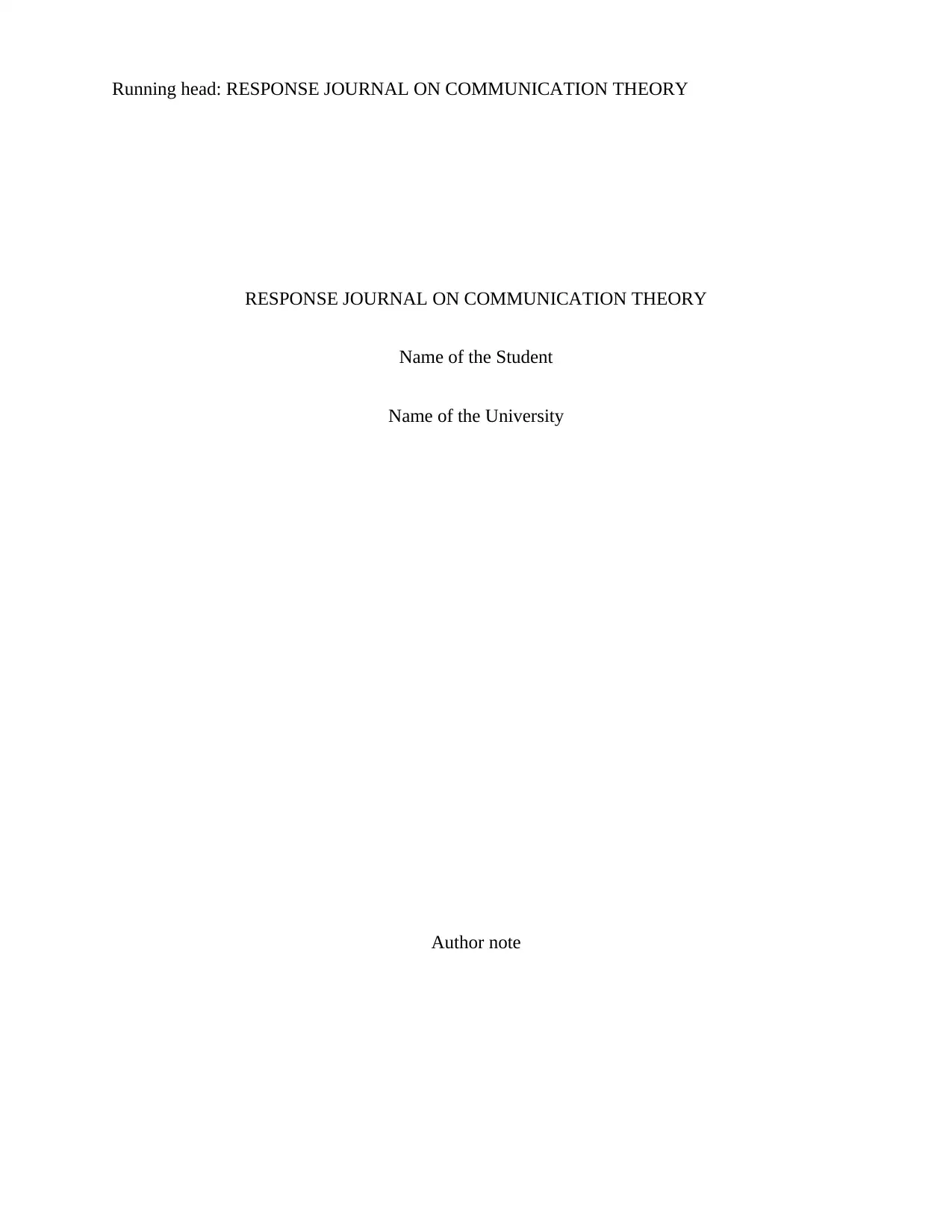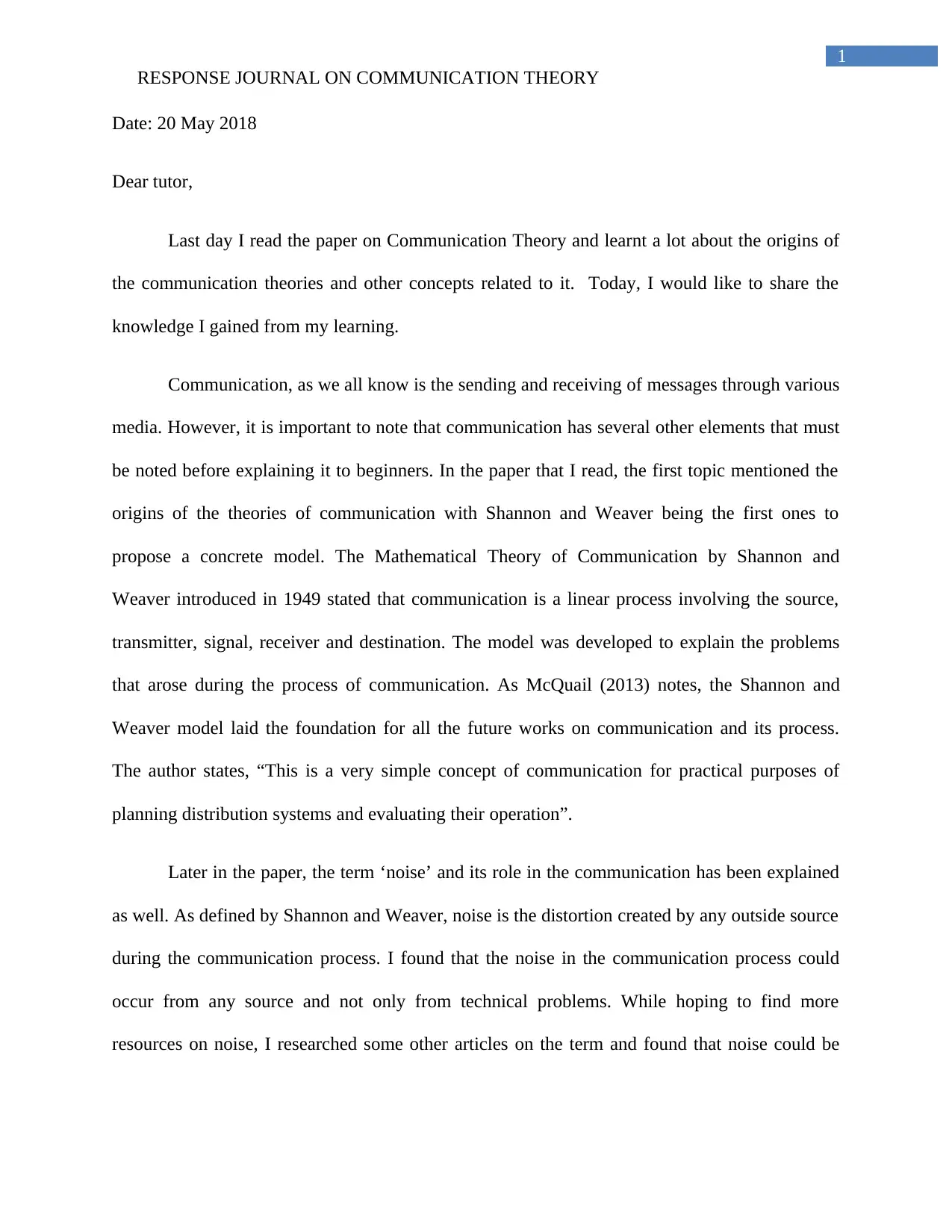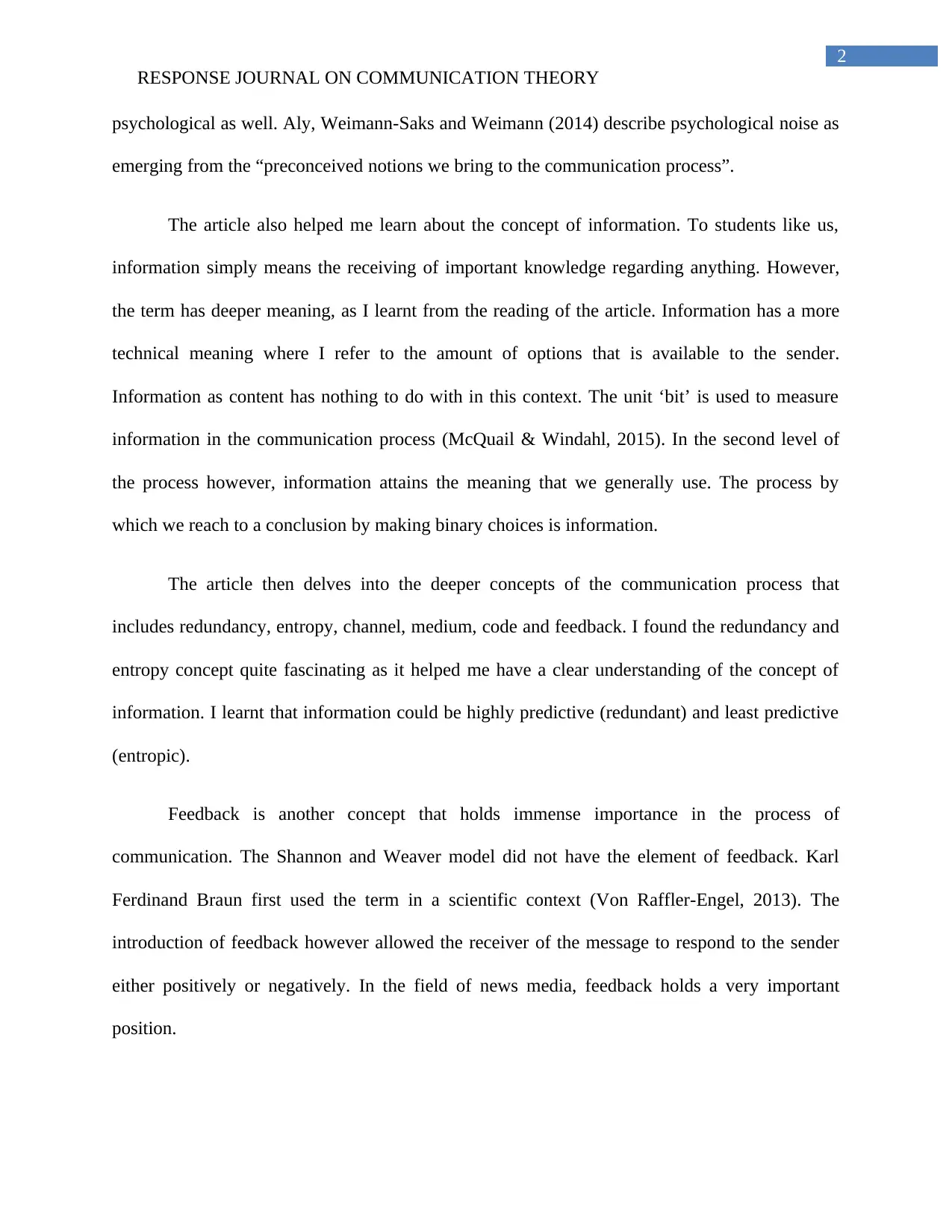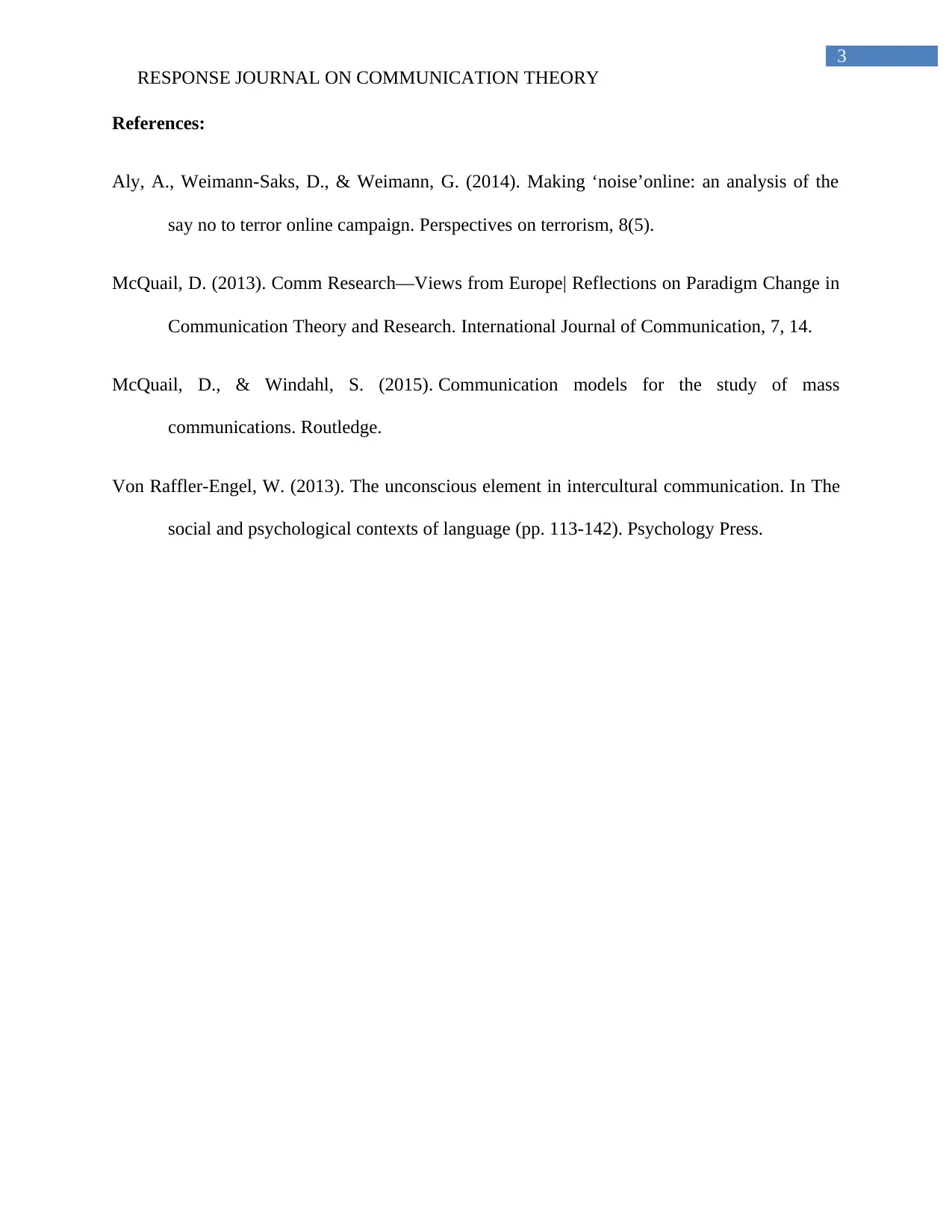CMNS130 Mass Communication: A Student's Response Journal on Theory
VerifiedAdded on 2023/06/12
|4
|790
|59
Journal and Reflective Writing
AI Summary
This document presents a student's response journal reflecting on communication theory, particularly focusing on the Shannon and Weaver model and its impact on understanding communication processes. The journal delves into the origins of communication theories, highlighting the linear process of communication involving the source, transmitter, signal, receiver, and destination. It discusses the concept of 'noise' and its various forms, including psychological noise, and explores the technical meaning of information in communication. Furthermore, the journal examines deeper concepts such as redundancy, entropy, channel, medium, code, and feedback, emphasizing the importance of feedback in modern communication, especially in news media. References to scholarly articles enhance the discussion.
1 out of 4









![[object Object]](/_next/static/media/star-bottom.7253800d.svg)